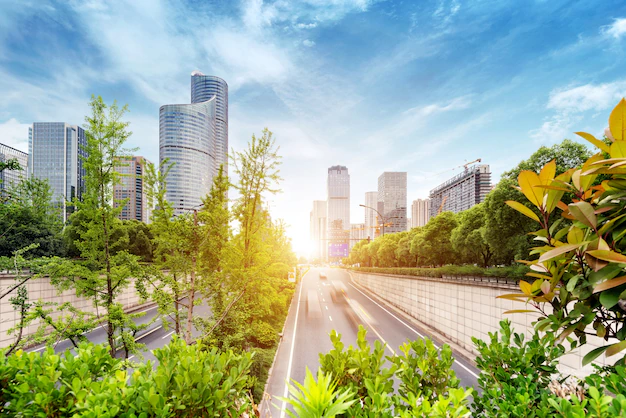
Greening The Grid: Overcoming Urban Landscape Challenges For A Lush Cityscape
In our rapidly urbanizing world, the need to transform urban landscapes into thriving green havens is becoming increasingly vital. As urban areas expand, they face many urban landscape challenges, including soil erosion, climate change, and the depletion of natural ecosystems.
Learn how landscape architecture and urban planning can tackle these challenges and pave the way for a lush and sustainable cityscape.
Urban landscape challenges
Erosion and more
One of the primary landscape challenges is how to prevent erosion caused by urbanization. The built environment and infrastructure disrupt natural soil structures, leading to increased erosion and the loss of fertile land.
Erosion threatens the urban environment and affects water quality, making it a critical concern for urban planners and landscape architects.
Landscape architecture
Landscape architecture stands as the bridge between urban development and nature. It is possible through thoughtful urban landscape design, integration of greenery, and addressing other environmental concerns.
Moreover, landscape architecture doesn’t just beautify cities. It also helps create functional and sustainable urban spaces that improve the quality of life for city dwellers.
Urban ecosystems
The urban ecosystem is complex, with a delicate balance of flora and fauna. Urban planning should aim to preserve and enhance these ecosystems, considering urban biodiversity and ecosystem services.
By studying urban ecosystems, the natural environment within urban areas can be maintained, promoting urban biodiversity and ecological balance.
Climate change
Climate change poses significant challenges to urban areas. From rising temperatures to extreme weather events, cities must adapt and develop urban designs that mitigate the impacts of climate change.
Urban design strategies prioritizing green infrastructure and sustainable city planning can help reduce the urban heat island effect, making cities more resilient in the face of climatic change.

Embracing the Landscape Ecology Paradigm
Landscape ecology offers a holistic perspective on urban landscapes. It highlights the interconnectedness of urban areas with their natural surroundings, providing insights into constructing design that promotes environmental sustainability.
This approach recognizes that urban environments are not isolated entities but integral parts of the larger natural ecosystem.
Enhancing ecosystem services
Ecosystem services like clean air, water, and green spaces are vital for human health and well-being. Sustainable city planning should prioritize these services to create a better quality of life for urban dwellers.
By integrating green spaces and green infrastructure into urban design, cities can improve air and water quality, reduce pollution, and enhance the overall well-being of their residents.
Meeting the challenge of maintenance
Preserving green infrastructure in urban areas requires carefully balancing design ideas and community involvement. Ensuring the maintenance of green spaces is essential for their longevity and effectiveness.
Engaging local communities in the upkeep of green infrastructure reduces maintenance costs and fosters a sense of ownership and connection to the urban environment.
Insights from designed experiments
Scientific research, including designed experiments, can provide valuable insights into optimizing urban landscapes. Collaboration among landscape architects, researchers, and city officials is essential to effectively addressing challenges.
By conducting experiments and studying the outcomes, cities can make informed decisions about urban planning and landscape design based on empirical data.
Last words
Creating lush, green urban landscapes is not merely an aspiration but a necessity in the face of rapid urbanization and climate change. Urban challenges can be overcome through thoughtful urban planning and landscape architecture. By prioritizing environmental sustainability, biodiversity, and ecosystem services, cities can be transformed into resilient and vibrant spaces.
Read Also:



















Post Your Comment